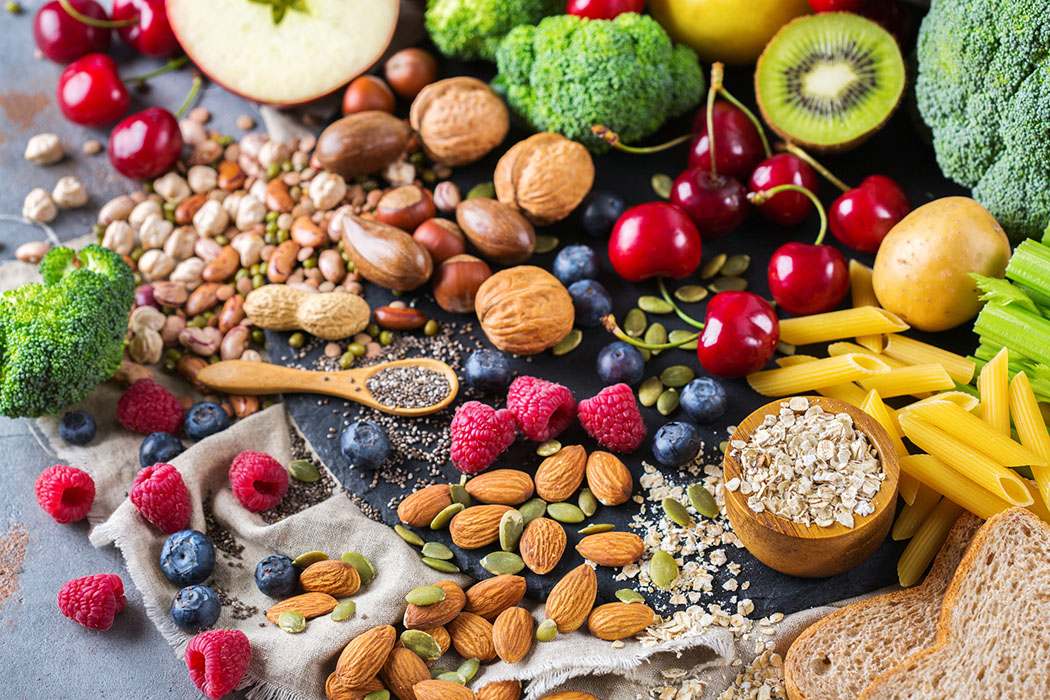It is time to stop thinking that a vegetarian, vegan, or plant-based diet and being an athlete are mutually exclusive.
I felt stronger as a runner. I feel even better now that I have been vegan for several years.
You don’t have my word for it. There are many world-class athletes who don’t eat meat.
Scott Jurek is a vegan ultramarathoner and one of the most successful. Alex Morgan, co-captain of the USA Women’s Soccer team, is also vegan.
Most linebackers for the Tennessee Titans are plant-based. New England Patriots quarterback Cam Newton is also plant-based. (Is Tom Brady vegan?) It’s not vegan, but his diet is 80 percent vegetable-based.
There are also strength and bodybuilding athletes such as Rich Roll, Natalie Matthews, and strongman Patrik Babooumian. They are not only great on a plant-based diet, but they have also been highly successful in competition. Robert Cheeke is a pioneer in vegan bodybuilding and co-author of my book, The Plant-Based Athlete.
Athletes are not just surviving on a vegetarian diet; they’re thriving.
The Plant-Based Athlete’s Diet
An endurance athlete can eat a plant-based diet. This is in no way different from a healthy diet. It may take some time to adjust to another diet from the one you eat at McDonald’s every single day. If you eat lots and lots of healthy, whole foods, then there aren’t many adjustments that you need to make to become vegetarian or plant-based.
You can go as far as you like, and some vegan and vegetarian athletes prefer to eat raw and gluten-free foods for greater energy and health benefits.
You don’t need to go that far to reap the benefits. There are many different levels of health when eating plant-based diets. Mine includes a variety of delicious cooked foods that people who eat more traditional diets would not eat.
The Plant-Based Diet to Gain Muscle Gain and Strength
It is the same for going plant-based if your goal is to gain weight, build muscle (or just get swol, as the kids love to say).
However, if that’s your goal, there are some things you need to think about when it comes to nutrition (precisely as if you were trying to add muscle to a non-vegan diet).
You can choose the macronutrients that best suit your body and goals.
It is understanding your caloric requirements.
A good workout plan is essential to complement your nutrition strategy.
However, I have found that simplicity is better for long-term health. This is what I have discovered for myself and many others.
The philosophy: healthy but accessible.
There are many books that advocate what I consider an “ideal” diet for athletic performance. (See Brendan Brazier’s Thrive, for instance.) Vegan, high-raw, alkaline.
It’s great to eat this way. It’s not easy. There are many strange ingredients and low-temperature cooking. But it’s not for everyone. This is a huge gap between the current diet and the one they are currently following.
I would like to offer an alternative. A diet that is plant-based (or vegetarian, if you prefer), that can support endurance training, can adapt for strength training, and that tastes delicious and is accessible to vegans.
Although you can do better nutritionally than me, I believe it is more important to stick to a diet that you like. Once you are comfortable eating vegetarian or vegan and have trained on it, it’s time for you to think about trying something more.
But where do you get your protein?
Ah yes, the favorite question of every vegan athlete.
The simple answer is that protein is found in all plant foods, but in smaller quantities. However, vegans can still get enough protein if they eat a balanced plant-based diet that includes beans, nuts, and other seeds.
Although it can be difficult at first to ensure you get enough protein in your meals, it is possible.
You can always use plant-based protein powders if you are trying to build muscle mass or just want to increase your protein intake, but they won’t be necessary for most people.
I was aware that endurance athletes can thrive on a diet with lower protein levels than what is recommended. I tried it and I have never felt better. I’ll never go back to those crazy 1-gram-of-protein-per-pound-of-body-weight rules again.
You won’t get enough protein if you eat a lot of potato chips and pizza. If you eat a variety of foods, make smart choices to include protein at every meal, and ensure you get a balanced amino profile, you’ll feel better.
Staple Foods
This list includes common foods that can be used to meet the nutritional needs of endurance athletes. There are many other foods that could be added to this list. The idea is to include common foods that are easily found in grocery stores and aren’t too exotic.
All types of vegetables, raw and cooked
Vegetable sprouts
All types of fruits, often raw
Beans and other legumes: chickpeas (black beans), pinto beans, chickpeas, lentils, chickpeas, and pinto beans.
Starchy vegetables such as sweet potatoes and potatoes
Brown rice
Pasta
Whole-wheat bread, pitas, and bagels
Bulgur wheat, buckwheat, and farro are all other grains and seeds.
Hummus
Nuts, nut milk, nut butter: almonds and cashews; hazelnut milk; peanut butter; almond butter; sunflower seed butter
Agave nectar is used as a workout fuel, but not as an all-purpose sweetener.
Protein powder
Soy products: tempeh, tofu
Limitations on tea and coffee
Want more? You can find my vegan grocery list to athletes here.
To simplify things even further, I base my meals on seven plant-based foods that are worth my time every day.
Caloric Breakdown
When I eat, I don’t count calories or even carbohydrate-protein-fat ratios. I don’t believe this is necessary unless you are trying to build muscle mass or lose weight. In this case, calorie density is the key.
Endurance diets are high in carbohydrates, so a vegetarian or vegan approach is a good choice. These ratios can be met with a variety of foods, especially for endurance athletes. Also, you can make your favorite endurance diets work without meat.
Although I don’t track calories very closely, I try my best to keep to the amounts laid out in Chris Carmichael’s book Food for Fitness. Although Carmichael’s recommendations are not necessarily accurate based on training duration, they are reasonable:
Carbohydrate: 65%
13% protein
22% fat
If you are aiming to achieve these numbers through a plant-based diet, you should be fine. It’s easy to do.
How Much Should You Eat?
About the same amount as it takes to feel satisfied, but not stuffed. We athletes have the luxury of eating more calories than those who are more sedentary. We actually need more calories.
Your goals may be weight loss or you may train less than I do. Find the right size meal for you.
Working out while eating
It is important to eat right before, during, or after your workouts. Workout Nutrition 101 has many recipes and guidelines for vegan workout foods.
Supplements for Plant-Based Athletes
Are vegan athletes able to take supplements? Fair question.
Vitamin B12 is a vital component of a plant-based diet. However, not everyone should take it. It is found in soil, but soil these days is often depleted.
Doctors often recommend vitamin D and two other omega-3 fatty oils (DHA or EPA). Although both are found in nature (the sun and algae), many people can benefit by supplementing their diet with more.
Warning: Do not assume that omega-3s are available in sufficient quantities (in flaxseeds and walnuts, for example). DHA and EPA are not required. These (and most plant-based Omega-3 sources) provide ALA. Some people can convert it into DHA or EPA, but not all. My family and I supplement with DHA and EPA to ensure brain health.
You don’t need meat
To Get Your Protein!

